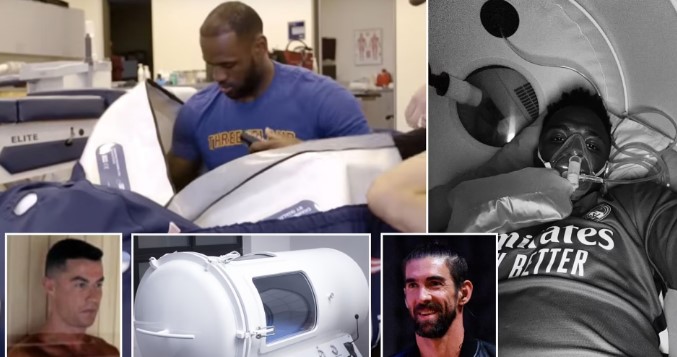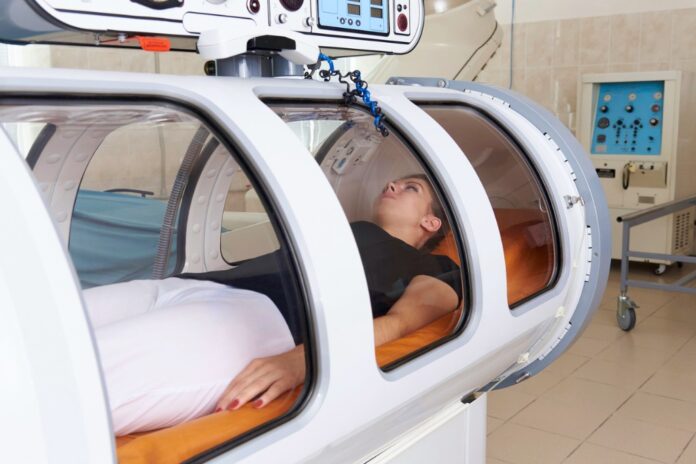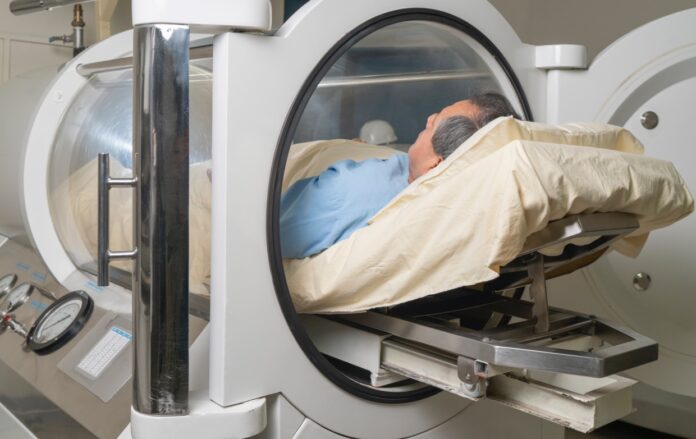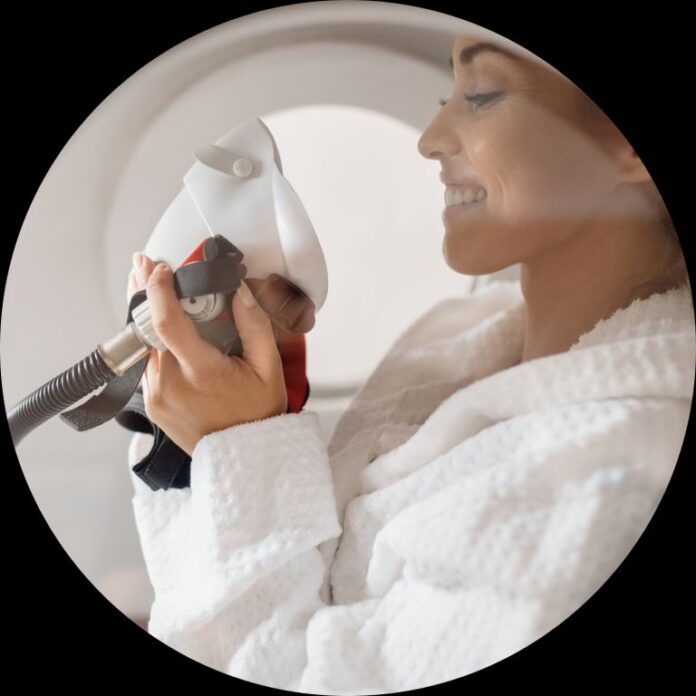Hyperbaric Oxygen Therapy (HBOT) is gaining attention in the fitness world. It’s essential to understand when to use HBOT to maximize its benefits. This post delves into HBOT’s mechanisms, its role in exercise, and the optimal timing for it, whether before or after a workout. By the end, you’ll have a clearer understanding of how to integrate HBOT into your fitness routine effectively.
Understanding HBOT
Hyperbaric Oxygen Therapy (HBOT) you’ll find at hyperbaric chamber Los Angeles involves breathing pure oxygen in a pressurized environment, typically a chamber. This process dramatically increases oxygen levels in the blood, enabling it to reach and heal tissues more effectively. Hyperbaric Oxygen Therapy is known for speeding up recovery, enhancing athletic performance, and even improving cognitive function. The therapy’s ability to significantly boost oxygen supply is a major point of interest in exercise physiology. It’s thought that this increased oxygen availability can enhance tissue repair and mitigate the effects of stressors like exercise-induced oxidative damage. This makes Hyperbaric Oxygen Therapy a potential game-changer in both medical rehabilitation and athletic training environments.
The Role of Oxygen in Exercise

Oxygen plays a pivotal role during exercise, primarily in energy production and muscle function. It helps in the production of adenosine triphosphate (ATP), the energy currency of the cell, necessary for muscle contractions. When we exercise, our bodies ramp up oxygen consumption to meet this increased energy demand. An adequate oxygen supply is crucial for efficient ATP production, leading to better endurance and strength. HBOT’s potential to amplify the body’s oxygen utilization during physical activity is significant. By enhancing oxygen availability, Hyperbaric Oxygen Therapy may improve aerobic performance, delay fatigue onset, and contribute to more efficient energy use in muscles.
HBOT Before Workout
Utilizing HBOT before a workout could offer several advantages. It can potentially increase endurance and reduce fatigue by saturating tissues with oxygen, leading to improved performance. This pre-loading of oxygen might enable athletes to sustain higher intensity levels for a more extended period, enhancing both aerobic and anaerobic exercises. The effectiveness of pre-workout HBOT, however, largely depends on individual physiology, the type of exercise, and the intensity of the workout. For sports that require high levels of stamina and aerobic capacity, pre-workout Hyperbaric Oxygen Therapy might provide a significant boost.
HBOT After Workout
Receiving HBOT after a workout focuses primarily on recovery and muscle repair. Strenuous physical activity can lead to muscle fatigue, soreness, and microtears. HBOT post-workout may significantly accelerate the healing process by delivering higher oxygen levels to damaged tissues. This increased oxygen supply can reduce inflammation, limit swelling, and promote quicker recovery, potentially reducing downtime between training sessions. Consequently, Hyperbaric Oxygen Therapy post-workout is a potentially valuable tool for athletes, particularly in sports with high physical demands or where rapid recovery is crucial for performance.
Timing Matters
The timing of HBOT is critical in maximizing its benefits. Choosing between pre- and post-workout sessions depends largely on the individual’s goals and the nature of their exercise regimen. Pre-workout HBOT might be more beneficial for those seeking performance enhancement, as it primes the body with increased oxygen levels. On the other hand, post-workout Hyperbaric Oxygen Therapy may be more effective for recovery and healing, helping to quickly repair exercise-induced tissue damage. Understanding these nuances and applying them to one’s fitness or rehabilitation routine is crucial for optimizing the therapy’s benefits.
Scientific Evidence
Several studies have delved into the relationship between HBOT and exercise, examining its effects on performance, recovery, and overall physical well-being. Some research suggests that pre-workout HBOT can enhance endurance and aerobic capacity, while other studies find more significant benefits in post-workout sessions, particularly in terms of recovery and reducing muscle soreness. However, the scientific community has yet to reach a consensus on this matter. More research is needed to conclusively determine the most effective timing for Hyperbaric Oxygen Therapy in relation to different types of exercise and athlete profiles.
Personalized Approach
It’s important to acknowledge that HBOT effects can vary significantly from person to person. Factors such as individual health status, fitness levels, training intensity, and specific training goals play a crucial role in determining the optimal timing for HBOT. Therefore, consulting with healthcare professionals and Hyperbaric Oxygen Therapy experts is essential for a personalized approach. This ensures that individuals receive the most benefit from this therapy, tailored to their unique needs and goals. Personalized protocols can be developed based on a thorough evaluation of an individual’s health status, fitness objectives, and response to the therapy.
Professional Athletes and HBOT

Hyperbaric Oxygen Therapy (HBOT) is gaining popularity among professional athletes for its potential in enhancing performance and speeding up recovery. Athletes like LeBron James and Michael Phelps have reportedly used Hyperbaric Oxygen Therapy to recover from injuries and improve their athletic performance. These high-profile examples showcase the therapy’s perceived benefits in reducing inflammation and accelerating healing.
Success Stories
Several success stories highlight HBOT’s effectiveness. For instance, NFL players have used it to recover from concussions and other injuries faster, returning to the field in remarkable time. Similarly, endurance athletes report improved recovery times and reduced fatigue when incorporating Hyperbaric Oxygen Therapy into their training routines.
Safety Concerns
While HBOT is generally considered safe, there are potential risks. The most common concerns include ear pressure changes, claustrophobia in the chamber, and, rarely, o2 toxicity. To minimize risks, it’s crucial for individuals to undergo HBOT under professional supervision and in certified facilities.
Precautions
Key precautions include ensuring the chamber’s pressure and o2 levels are correctly adjusted and monitored. Individuals with certain medical conditions, such as lung diseases or ear problems, should approach Hyperbaric Oxygen Therapy with caution and always discuss the therapy with their healthcare provider first.
Consultation with Experts
It is essential for athletes and individuals considering HBOT to consult with healthcare professionals. This consultation is vital to understand if HBOT is suitable for their specific health needs and athletic goals. Healthcare professionals can provide personalized advice and ensure that the therapy is used safely and effectively.
Conclusion

HBOT offers promising benefits for athletes and fitness enthusiasts. Its effectiveness, however, is closely linked to timing. Whether it’s pre-workout for enhanced performance or post-workout for faster recovery, the key is to tailor the therapy to individual needs and goals. As research continues to evolve, so will our understanding of the optimal use of Hyperbaric Oxygen Therapy in fitness regimes. For now, personalization and expert consultation remain the best approach to leveraging HBOT’s full potential.











